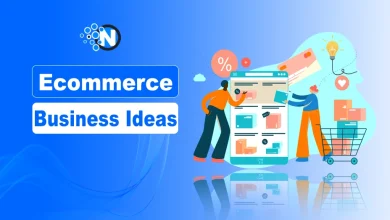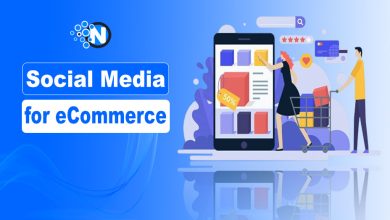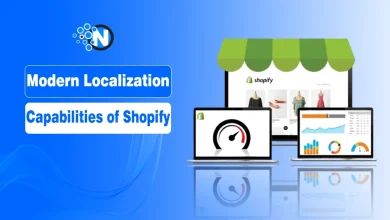Why Most E-Commerce Stores Get No Traffic (And How to Fix It)

Most entrepreneurs build their website, hit “publish,” and hope customers magically show up. But in today’s overcrowded digital marketplace, hope is not a strategy.
The real problem? Visibility.
No sales. Not designed! Not even product quality (though that matters). The reason most stores fail to grow is simple: no one knows they exist.
If you’re searching for the best place to list your online store for free traffic, congratulations – you’re already ahead of the majority of e-commerce store owners.
Let’s discuss more about why so many online stores struggle to get traffic and how you can turn that around using long-term, low-cost, and highly effective visibility strategies.
🚫 Mistake #1: Building It and Hoping They Come
You’ve probably heard the phrase: “If you build it, they will come.” That might work in movies, but not in modern e-commerce. You can build the most gorgeous, intuitive, product-packed store in the world – but if no one finds it, none of that matters.
Most store owners launch and sit back, thinking ads or social media posts will handle the rest. A few clicks might trickle in. Maybe even a sale or two. But soon, traffic flatlines.
✅ Here’s the truth: Traffic doesn’t show up because you launched. It shows up because you make it find you.
🚫 Mistake #2: Over-Relying on Paid Ads
When the initial excitement fades, many turn to paid ads. Facebook, Instagram, Google. They all promise exposure. And while they can work, there’s a major catch:
- Ad costs are skyrocketing
- You’re competing with brands spending 10x more
- Once you stop paying, the traffic disappears
Paid traffic is like renting attention. The moment your budget runs out, your reach vanishes.
✅ The Fix: Build organic visibility that keeps working after you’ve done the work once. Focus on content, SEO, and placements that keep driving traffic 24/7 – especially listing your store in high-quality directories where shoppers already go to discover products.
💡 What Is Organic Visibility, and Why Does It Matter?
Organic visibility means getting found without paying for every click. It includes:
- Ranking on Google through SEO
- Getting featured on blogs or gift guides
- Submitting to product discovery platforms
- Being shared in communities like Reddit or Facebook Groups
- Having pins circulate on Pinterest
These traffic sources are sustainable. You don’t need to feed them cash daily to stay visible. You build them once, and they work for you long-term.
🚫 Mistake #3: No Google Presence
Search traffic is one of the most underused tools in e-commerce. Why? Because SEO feels difficult or overwhelming to many store owners. But ignoring it means your store gets buried while others rise.
If you’re not showing up on page 1 of Google, you might as well be invisible.
✅ The Fix: Use long-tail keywords—the exact phrases your target audience is searching for. These are less competitive and often come with stronger purchase intent.
Examples:
- Instead of “yoga mat” ➡ try “eco-friendly yoga mat for beginners”
- Instead of “gift box” ➡ try “luxury birthday gift box for her under $50”
- Instead of “dog treats” ➡ try “organic grain-free treats for senior dogs”
Update your product titles, meta descriptions, and image alt text. The more relevant your content, the more likely Google is to serve it up to shoppers.
🚫 Mistake #4: Ignoring Off-Site Visibility
Many store owners focus 100% on what happens on their site design, layout, product pages – while completely ignoring what happens off their site.
But visibility doesn’t happen in a vacuum. You need people and platforms pointing to you.
✅ The Fix: Start building your off-site presence by submitting your store to curated directories and discovery platforms. One of the best starting points is:
This platform is tailor-made for e-commerce brands and helps you:
- Get discovered by real, intentional shoppers
- Build authority with editorial reviews
- Improve SEO with keyword-rich listings and high-quality backlinks
- Stay visible without ongoing ad costs
- Show up in niche categories relevant to your store (fashion, wellness, pets, etc.)
The best part? Once your listing is live, it continues working for you day and night.
🚫 Mistake #5: Weak Product Pages
Let’s say someone does find your store. If your product page is underwhelming, cluttered, or generic—they’ll bounce. That’s a lost sale, and it hurts your SEO metrics too.
✅ The Fix: Turn every product page into a sales tool. Include:
- A clear, benefit-focused headline
- Descriptive, emotional copy (speak to the shopper’s needs)
- High-quality lifestyle images
- A video demo (even if it’s basic)
- Customer reviews and ratings
- Trust badges (shipping, returns, secure checkout)
- A mini FAQ about the product
- Related products to increase browsing time
Think of your product page as your best salesperson. Make sure it’s persuasive and helpful.
🚫 Mistake #6: No Blog or Content Strategy
Content drives traffic. It builds trust. It tells Google what your store is about. And it gives your audience value beyond just a sales pitch.
Yet, most e-commerce stores skip content completely or publish generic fluff with no search value.
✅ The Fix: Build a blog around your products and customer interests. Examples:
- Sell candles? Write “Top 5 Scents for a Cozy Fall Night”
- Sell skincare? Write “How to Build a Morning Routine for Dry Skin”
- Sell tech? Write “Best Minimalist Laptop Accessories for Remote Work”
These posts bring people in through search, Pinterest, and social media – and they give you a natural way to plug your products.
🚫 Mistake #7: Not Tracking Performance
If you’re not tracking what works, you’re guessing. And guessing is expensive.
✅ The Fix: Set up the following tools:
- Google Analytics to see where your traffic comes from
- Google Search Console to track which keywords drive traffic
- Bitly or UTM links to measure link clicks from directories and social media
- Microsoft Clarity or Hotjar to see how users interact with your pages
Tracking = clarity. And clarity helps you double down on what’s working
Recap: How to Fix the No-Traffic Problem
Here’s your visibility checklist:
- Submit your store to FindThatStore
- Use long-tail keywords on all product and category pages
- Add your store to niche directories and roundups
- Improve product pages with reviews, images, and better copy
- Create content that targets buyer intent and seasonal trends
- Monitor traffic sources and refine based on data
You don’t need 100,000 followers or a six-figure ad budget to succeed. You need the right exposure in the right places.
Final Thoughts:
You didn’t build your store to sit in the dark. And you don’t need to rely on luck, viral posts, or ad dollars to get seen.
With the right visibility strategy, your store can go from hidden to discovered—and from traffic trickle to steady stream.
And if you do nothing else today, take this first step: It’s free, fast, and one of the most effective ways to start getting real, organic traffic to your online store.
Don’t just build a store. Build a store that gets found.




